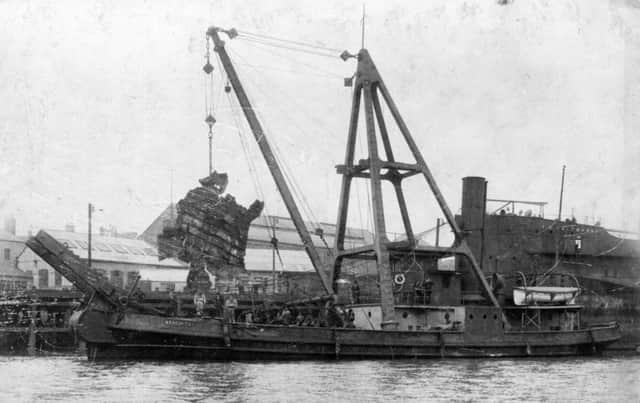ON THE WATERFRONT: Salvage steamers that went to work clearing the Wear


Behind the picture lies an interesting story, which took some research to figure out.
The 339 gross-tons Standfast, owned by London firm Maritime Salvors Ltd was in the Wear as part of an operation to remove three block ships which had been scuttled at Sunderland at the start of World War One. It was generally agreed afterwards that their sinking was a waste of precious merchant navy assets, of limited defensive
value and a subsequent hindrance to navigation.
Advertisement
Hide AdAdvertisement
Hide AdOn September 20, 1919, the Admiralty had accepted Maritime Salvors’ tender to salvage the sunken block ships; namely the steamers Fernlands and Berkshire from Sunderland Harbour entrance, and Chicklade from the South Outlet.
Based at its depot in Newhaven Harbour, the company had been formed in 1919 with the intention of profiting from lucrative wrecks requiring clearance after hostilities had ceased. Starting in a small way, the business developed considerably as it strove to become a leading marine salvor and undertake much of the work that had been controlled from Hamburg before the war.
Two decommissioned US Navy salvage vessels, Manna Hatta and Chesapeake were purchased and renamed Reliant and Restorer, respectively. These ships carried innovative underwater oxy-acetylene cutters for divers to burn holes in the hulls in sunken craft to recover valuable cargo and were said to be the world’s most fully equipped salvage steamers.
Among the fleet were also the 1867-built cargo ship Lincolnshire and tugs Refloater, Hotspur and Alligator.
Advertisement
Hide AdAdvertisement
Hide AdStandfast had been built by Skinner Shipbuilding and Drydock Co of Baltimore, USA in 1906, originally being named Ohio and owned by Baltimore and Ohio Railroad Co.
In 1915, she was acquired by the British Admiralty as the mooring and boom defence vessel Steadfast.
In 1922, she was sold to Maritime Salvors Ltd, being registered at London on August 12, that year. It seems that she was soon put to work at Sunderland.
The image in which she appears can be dated between June 21 and November 24, when the 1903 Doxford-built turret steamer EO Saltmarsh (forepart shown far right) was in port, most of the time being alongside Manor Quay.
Advertisement
Hide AdAdvertisement
Hide AdThe Sunderland contract had been dogged with difficulties and took many months to complete, but Maritime Salvors Ltd had been concerned with many notable salvage operations, as well as high profile legal disputes.
By January, 1927 the overstretched company was in serious financial difficulties, being in debt to the tune of £261,082 (over £16.5 million in today’s money). The business entered voluntary liquidation later that year and was wound up.
Standfast’s registry was closed in 1928, her subsequent fate being unknown.